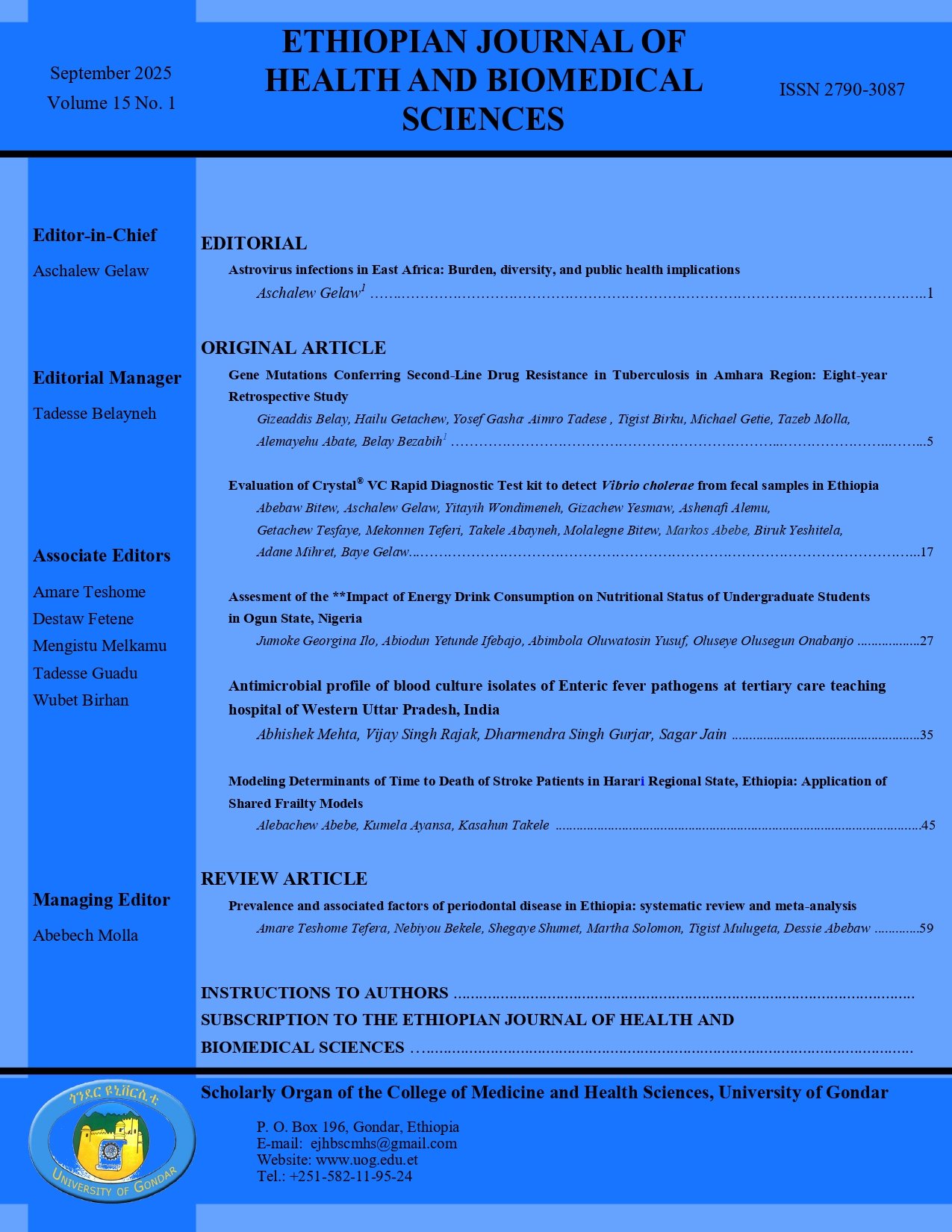Antimicrobial susceptibility profile of blood culture isolates of Enteric fever pathogens at tertiary care teaching hospital of Western Uttar Pradesh, India
DOI:
https://doi.org/10.20372/ejhbs.v15i1.914Keywords:
Enteric fever, S.typhi, S.paratyphi A, Antimicrobial resistance pattern, Blood culture, Antibiotic susceptibility testing,, Multidrug resistanceAbstract
Background: Enteric fever is remains a significant public health concern globally, with its impact exacerbated by the rise of antimicrobial resistance, which is largely driven by indiscriminate and irrational antibiotic use. Continuous surveillance of local antimicrobial resistance trends is essential to guide effective treatment protocols and curb the spread of drug- resistance strains.
Objective: This study aimed to determine the prevalence, antibiotic sensitivity patterns, and extended-spectrum beta-lactamase (ESBL) production in culture-confirmed enteric fever cases caused by Salmonella enterica.
Method: A retrospective, laboratory record-based cross-sectional study was conducted at a rural tertiary care teaching hospital. Blood culture data from July 2017 to June 2019 were reviewed to identify S. enterica isolates and assess their antibiotic susceptibility patterns. Data were analyzed using Microsoft Excel 2010 and summarized using descriptive statistics (frequencies and percentages). The chi-square test was applied to determine statistical significance, with p-value < 0.05 considered significant.
Result: Out of 512 blood samples processed for culture and sensitivity, 35 (6.8%) yielded Salmonella species Isolates. Salmonella typhi accounted for (n = 30, 86%), followed by Salmonella paratyphi A (n = 5, 14%). S. typhi isolates showed 100% susceptibility to Imipenem, > 90% susceptibility to third-generation cephalosporins, and high susceptibility to Aztreonam (90%), Cefepime (90%), Levofloxacin (86.67%) and Ciprofloxacin (70%). S. paratyphi A strains showed complete susceptibility (100%) to Cefixime, Ceftazidime, Ceftriaxone, Amikacin, and imipenem, and 80% susceptibility to Levofloxacin, Cefotaxime, Cefepime, and Azatreonam. A low level of multidrug resistance was observed, but resistance to Nalidixic acid was notably high.
Conclusion: The findings highlight the importance of performing blood cultures and antibiotic susceptibility testing in all suspected enteric fever cases. The emergence of antimicrobial resistance underscores the urgent need for antimicrobial stewardship programs to regulate and rationalize antibiotic use and prevent the spread of multidrug-resistance Salmonella strains.
Downloads
Published
How to Cite
Issue
Section
License
Copyright (c) 2025 Dr.Abhishek Mehta, Dr.Vijay Singh Rajak, Dr.Dharmendra Singh Gurjar, Dr.Sagar Jain

This work is licensed under a Creative Commons Attribution-NonCommercial 4.0 International License.


